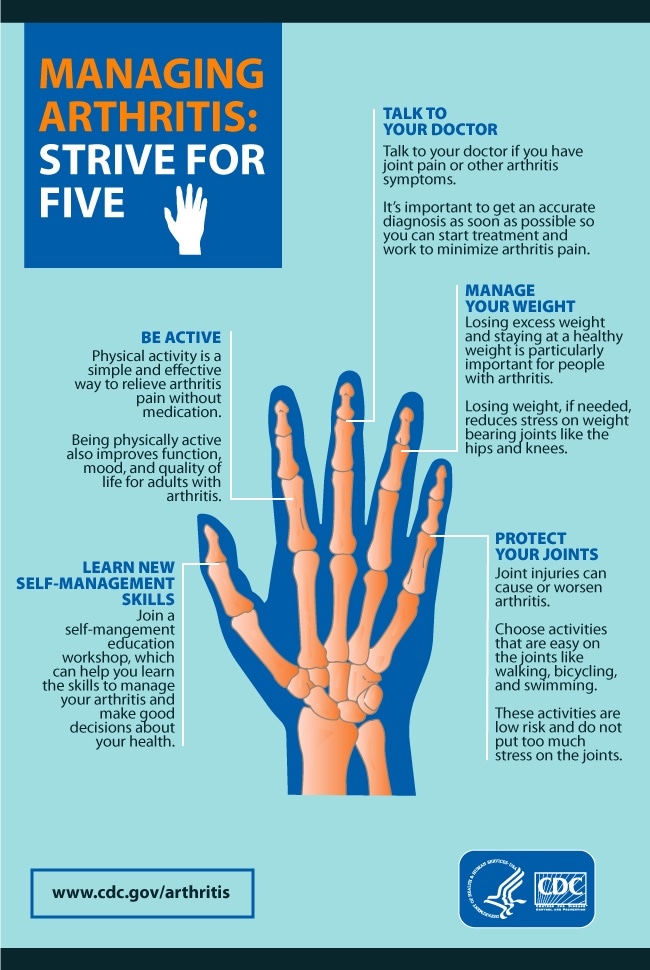Discover how to navigate the ups and downs of living with RA with these essential tips for daily life.
Table of Contents
- Introduction: Understanding Rheumatoid Arthritis
- Spotting the Signs: What to Look For
- Eat Well to Feel Well: The Anti-Inflammatory Diet
- On the Move: Exercise for Arthritis
- Power Naps: Tackling Chronic Fatigue
- School Time Tricks
- Helping Hands: Getting Support from Family
- Staying Positive: Mind Over Matter
- Technology to the Rescue
- Looking Ahead: Living with Rheumatoid Arthritis
- FAQs: Your Questions Answered
Introduction: Understanding Rheumatoid Arthritis
Rheumatoid arthritis is a condition that can make everyday activities challenging. It affects the joints and can cause pain and discomfort. Understanding what rheumatoid arthritis is and how it impacts your body is crucial to finding ways to manage it effectively. This is where learning about joint pain relief becomes essential.
Imagine your joints as the hinges on a door. When they work smoothly, the door opens and closes easily. But when inflammation from rheumatoid arthritis sets in, it’s like trying to open a rusty door—it’s stiff, squeaky, and really hard to move. This stiffness and pain in your joints can make simple tasks like playing with friends or even walking up the stairs feel like climbing a mountain.
So, by learning more about how rheumatoid arthritis affects your body, you can better understand how to tame it and make everyday life a little easier. Let’s dive into this together.
Spotting the Signs: What to Look For
When it comes to rheumatoid arthritis, it’s essential to be able to recognize the signs early on. One of the most common symptoms to watch out for is knee pain. If you or someone you know is experiencing persistent knee pain, it could be a warning sign of rheumatoid arthritis.
Knowing Your Symptoms
Aside from knee pain, other symptoms to be aware of include sore and stiff joints, especially in the morning. Swelling and warmth in the joints, fatigue, and a general feeling of being unwell are also signs to look out for. If you notice any of these symptoms, it’s important to talk to a doctor to get a proper diagnosis and start managing rheumatoid arthritis effectively.
Eat Well to Feel Well: The Anti-Inflammatory Diet
An anti-inflammatory diet is like giving your body a superhero shield against rheumatoid arthritis. This special way of eating helps to calm angry joint inflammation and make you feel better overall. By picking the right foods, you can fight off the pain and stiffness that rheumatoid arthritis can bring.

Image courtesy of www.cdc.gov via Google Images
So, what are these magical foods that help you feel like a superhero? We’re talking about fruits and veggies like berries, oranges, and leafy greens – all bursting with vitamins and antioxidants to fight off the bad guys. Fish, nuts, and seeds are also your best pals with their healthy dose of omega-3 fatty acids, which are great at reducing inflammation.
On the Move: Exercise for Arthritis
Exercise is a great way to help ease arthritis symptoms and improve how your joints work. But it doesn’t have to be all serious and boring! You can choose fun activities that you enjoy, making your workouts more like playtime. Here are some exercise ideas that might be just right for children with rheumatoid arthritis:
1. Swimming: Swimming is a fantastic exercise for arthritis because the water supports your body weight, making it easier on your joints. Plus, who doesn’t love splashing around in the pool?
2. Dancing: Put on some music and have a dance party! Dancing is a fun way to move your body and get those joints moving. You can dance alone or grab a friend to join in the fun.
3. Yoga: Yoga is a gentle form of exercise that helps improve flexibility, strength, and balance. There are even yoga poses specifically designed for people with arthritis.
4. Bike Riding: Riding a bike is a low-impact exercise that’s easy on the joints but still gives you a great workout. You can enjoy the fresh air and scenery while getting some exercise.
Remember, the key is to find activities that you enjoy and that make you feel good. And always listen to your body – if something hurts, stop and try something else. Have fun and keep moving!
Power Naps: Tackling Chronic Fatigue
Living with rheumatoid arthritis can sometimes make you feel really tired all the time. This constant fatigue can make it hard to do the things you love. But don’t worry, there’s a simple and effective way to combat this tiredness: power naps!

Image courtesy of www.peacehealth.org via Google Images
When you take a short rest during the day, it can help recharge your batteries and give you the energy you need to keep going. Think of it like giving your body a little break so it can work better later on.
It’s important to listen to your body and not push yourself too hard. If you’re feeling exhausted, find a quiet and comfortable spot to lie down for a quick nap. Even just 20-30 minutes of rest can make a big difference in how you feel.
So, the next time you’re feeling tired and worn out from dealing with rheumatoid arthritis, remember that a power nap might be all you need to tackle chronic fatigue and get back to doing the things you enjoy!
School Time Tricks
Dealing with rheumatoid arthritis at school can sometimes be tricky, but there are ways to make it easier. Here are some tips to help you navigate school activities without letting joint pain get in the way.
Talking to Teachers
It’s important to talk to your teachers about your condition so they can better understand why you might need to take breaks or do things a little differently. You can explain to them that rheumatoid arthritis can make your joints hurt sometimes, and you may need to sit out certain activities or stretch more often.
Playing with Friends
Playing with your friends is lots of fun, but it’s also important to take care of your joints. You can still join in on playtime by choosing activities that are easier on your body, like swimming or riding a bike. And remember, it’s okay to take breaks when you need to rest your joints.
Helping Hands: Getting Support from Family
Dealing with rheumatoid arthritis can be tough, but having your family by your side can make a big difference. They can offer a helping hand when you need it most. Here’s how your loved ones can support you:

Image courtesy of www.raynauds.org via Google Images
Hugs and Love
When you’re in pain or feeling down, a hug from a family member can make you feel better. Knowing that they care about you and are there for you can lift your spirits and make you feel less alone.
Understanding Your Needs
Family members who understand what you’re going through can be a great source of support. They can help you rest when you need to, remind you to take your medication, and make adjustments to activities to accommodate your condition.
Assistance with Daily Tasks
Sometimes, simple tasks like opening jars, reaching for items, or tying shoelaces can be challenging when you have joint pain. Family members can lend a hand with these tasks, making your daily life a little easier.
| Tip | Description |
|---|---|
| 1. Stay Active | Engage in gentle exercises like swimming or yoga to keep joints flexible and muscles strong. |
| 2. Manage Stress | Practice relaxation techniques such as meditation or deep breathing to reduce flare-ups. |
| 3. Eat a Healthy Diet | Include foods rich in antioxidants and omega-3 fatty acids to reduce inflammation. |
| 4. Get Enough Sleep | Establish a bedtime routine and create a comfortable sleep environment to promote restful sleep. |
| 5. Use Assistive Devices | Utilize tools like jar openers or reachers to make daily tasks easier on joints. |
Remember, it’s okay to ask for help when you need it. Your family is there to support you, and together, you can better manage your rheumatoid arthritis.
Staying Positive: Mind Over Matter
Living with rheumatoid arthritis and chronic fatigue syndrome can be tough, but having a positive mindset can make a big difference in how you feel. Your thoughts and habits play a major role in how you cope with these conditions. Here are some tips to help you stay positive:
Focus on the Good
When you’re dealing with rheumatoid arthritis and chronic fatigue, it can be easy to let negative thoughts take over. Instead, try to focus on the things that bring you joy and happiness. Whether it’s spending time with loved ones, enjoying a favorite hobby, or simply being grateful for the little things in life, shifting your focus to the positive can help lift your spirits.
Practice Mindfulness
Mindfulness is a technique that involves being fully present in the moment and paying attention to your thoughts and feelings without judgment. By practicing mindfulness, you can learn to manage stress, reduce anxiety, and improve your overall well-being. Try simple exercises like deep breathing, meditation, or yoga to help calm your mind and body.
Stay Active
Physical activity is not only good for your body but also for your mind. Exercise releases endorphins, the feel-good hormones that can boost your mood and reduce stress. Even if you have joint pain from arthritis, gentle activities like swimming, walking, or yoga can help improve your mental outlook and keep you motivated.
By staying positive and focusing on the good things in your life, you can better manage the challenges of living with rheumatoid arthritis and chronic fatigue syndrome. Remember, your mindset can have a powerful effect on how you feel, so make sure to take care of your mental well-being along with your physical health.
Technology to the Rescue
Living with rheumatoid arthritis can be tough, but luckily, there are some cool gadgets and gizmos out there that can help make things a bit easier for you. Let’s take a look at how technology can come to the rescue!

Image courtesy of arthritis.theenthusiasticlife.com via Google Images
Apps and Alarms
One really handy way technology can help you manage your rheumatoid arthritis is through smartphone apps. These apps can remind you to take your medications on time or to do your stretching exercises to keep your joints feeling good. They can also track your symptoms and help you communicate better with your doctor about how you’re feeling. With just a few taps on your phone, you can stay on top of your arthritis management and feel more in control of your health.
Looking Ahead: Living with Rheumatoid Arthritis
Living with rheumatoid arthritis may present challenges, but remember that you are not alone in this journey. By following the tips outlined in this article, you can take control of your condition and lead a fulfilling life.
Always remember to listen to your body and communicate with your healthcare team. They are there to support you every step of the way. Stay positive, stay active, and stay hopeful – you’ve got this!
FAQs: Your Questions Answered
Rheumatoid Arthritis and Joint Pain
One common question kids might have about rheumatoid arthritis is: “What causes joint pain?” Well, rheumatoid arthritis is an autoimmune disease, which means that the body’s immune system mistakenly attacks the joints. This attack leads to inflammation, swelling, and pain in the joints.
Another question that may come up is, “Can kids get rheumatoid arthritis?” While it is more common in adults, kids can also develop rheumatoid arthritis. It is essential to talk to a doctor if you have concerns about joint pain or stiffness.
Coping with Knee Pain
If you are experiencing knee pain, you might wonder, “How can I make my knees feel better?” One way to help reduce knee pain is through gentle exercises that strengthen the muscles around the knee. Maintaining a healthy weight can also take pressure off the knees and lessen discomfort.
Many children also ask, “Can knee pain go away on its own?” In some cases, knee pain may improve with rest, ice, and over-the-counter pain relievers. However, if the pain persists or worsens, it is essential to see a doctor for a proper diagnosis and treatment plan.
Understanding Chronic Fatigue Syndrome
When it comes to chronic fatigue syndrome, a frequent question is, “Why am I always so tired?” Chronic fatigue syndrome is a condition that causes persistent fatigue that is not improved by rest. It can be challenging to deal with, but strategies like pacing activities, getting enough sleep, and practicing relaxation techniques can help manage fatigue.
Another question that may arise is, “Can chronic fatigue syndrome be cured?” While there is no specific cure for chronic fatigue syndrome, many individuals find relief through various treatments and lifestyle adjustments. It is crucial to work with healthcare providers to find a management plan that works best for you.





